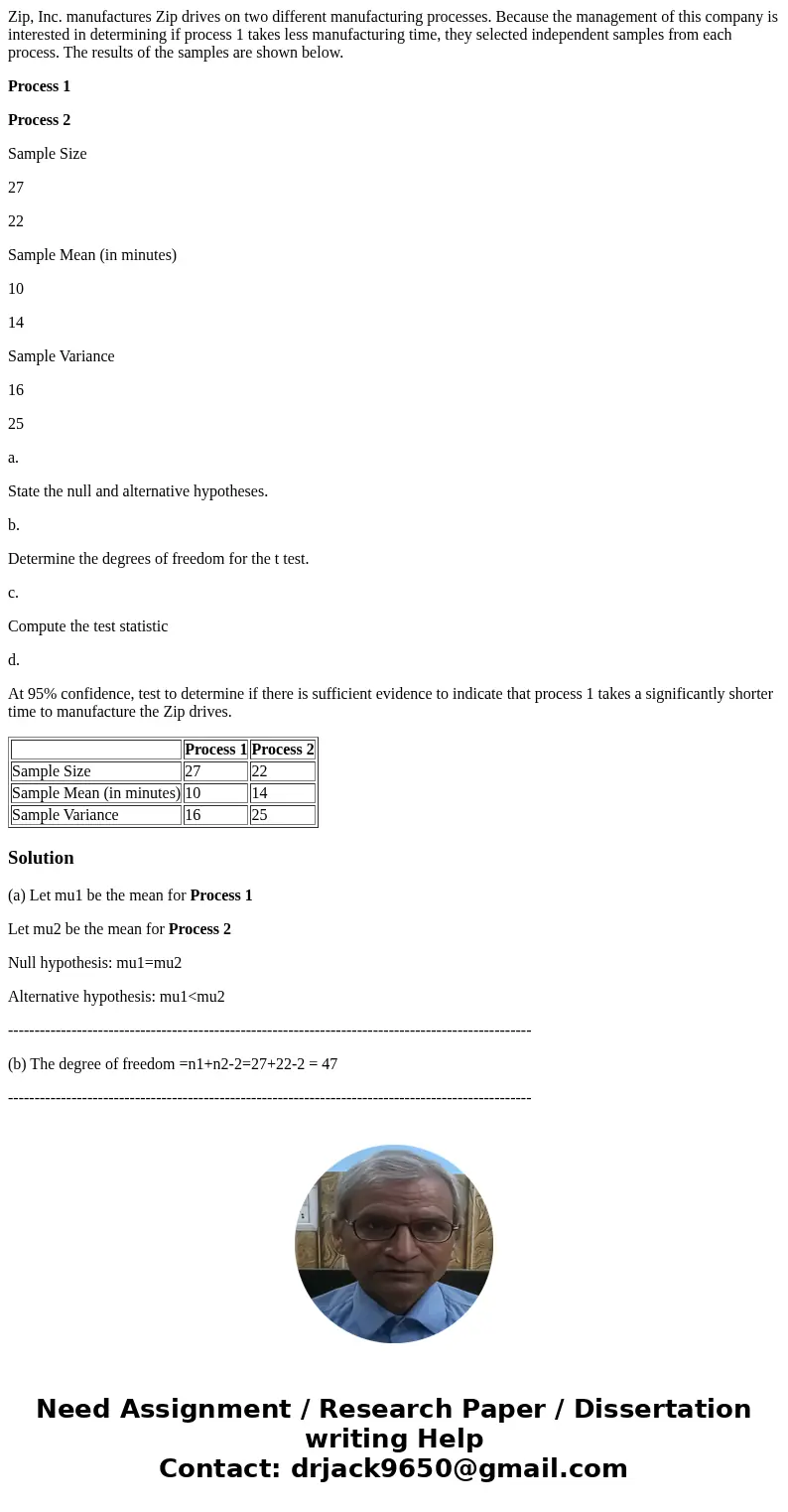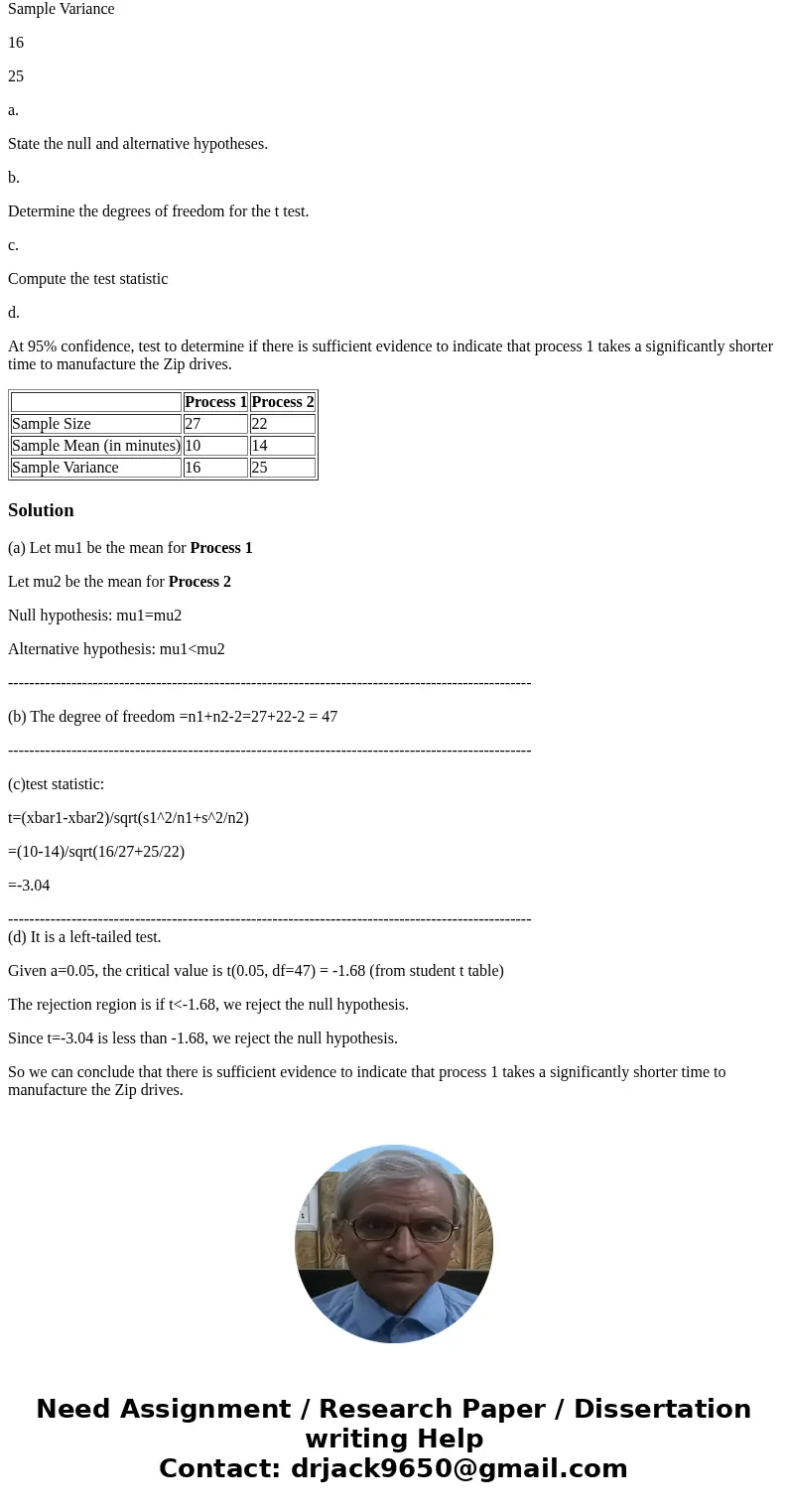Zip Inc manufactures Zip drives on two different manufacturi
Zip, Inc. manufactures Zip drives on two different manufacturing processes. Because the management of this company is interested in determining if process 1 takes less manufacturing time, they selected independent samples from each process. The results of the samples are shown below.
Process 1
Process 2
Sample Size
27
22
Sample Mean (in minutes)
10
14
Sample Variance
16
25
a.
State the null and alternative hypotheses.
b.
Determine the degrees of freedom for the t test.
c.
Compute the test statistic
d.
At 95% confidence, test to determine if there is sufficient evidence to indicate that process 1 takes a significantly shorter time to manufacture the Zip drives.
| Process 1 | Process 2 | |
| Sample Size | 27 | 22 |
| Sample Mean (in minutes) | 10 | 14 |
| Sample Variance | 16 | 25 |
Solution
(a) Let mu1 be the mean for Process 1
Let mu2 be the mean for Process 2
Null hypothesis: mu1=mu2
Alternative hypothesis: mu1<mu2
---------------------------------------------------------------------------------------------------
(b) The degree of freedom =n1+n2-2=27+22-2 = 47
---------------------------------------------------------------------------------------------------
(c)test statistic:
t=(xbar1-xbar2)/sqrt(s1^2/n1+s^2/n2)
=(10-14)/sqrt(16/27+25/22)
=-3.04
---------------------------------------------------------------------------------------------------
(d) It is a left-tailed test.
Given a=0.05, the critical value is t(0.05, df=47) = -1.68 (from student t table)
The rejection region is if t<-1.68, we reject the null hypothesis.
Since t=-3.04 is less than -1.68, we reject the null hypothesis.
So we can conclude that there is sufficient evidence to indicate that process 1 takes a significantly shorter time to manufacture the Zip drives.


 Homework Sourse
Homework Sourse